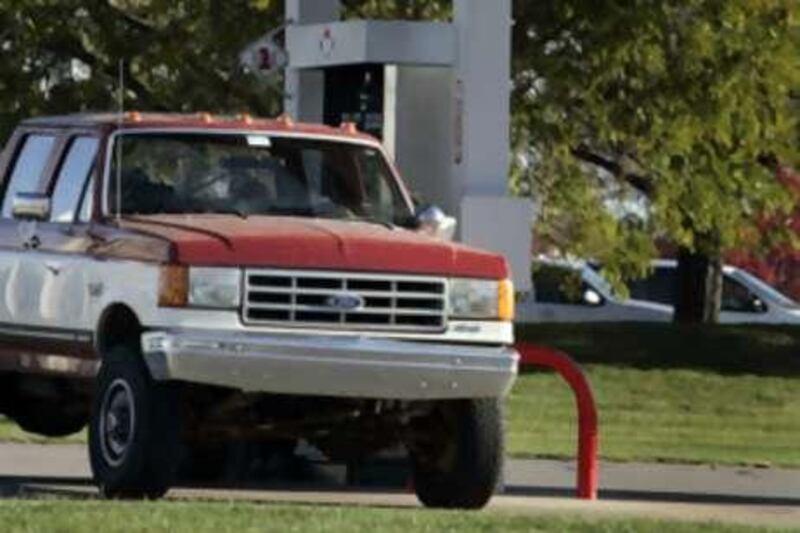A nearly 60 per cent plunge in crude prices over the past three months and a big drop in prices at the pump has failed to halt a 10-month slide in fuel demand in the US, the world's largest consuming nation. The reason, revealed in a July report on petroleum refining trends by the global consulting firm Booz, is that Americans buy more petrol when they have more cash in their wallets, not necessarily when the price is low.
The correlation between US petrol demand and personal disposable income (PDI) has until recently softened the impact of historically high US petrol prices on demand, the analysts Andrew Clyde and Pedro Caruso wrote. "Against this backdrop lies the threat of recession or - just as menacing - stagflation. If gross domestic product decreases and inflation increases, then PDI will drop, and demand for (petrol) will drop with it."
Since the Booz report was published, the US subprime lending crisis has unleashed a global financial maelstrom that has hit the US consumer earlier and harder than anyone else. Americans who were already taking fewer trips in smaller cars than a year earlier responded with more of the same. To the many US residents who are newly unemployed, fear for the safety of their jobs, or now pay more for mortgages or revolving credit-card balances, it simply does not matter that petrol costs nearly 40 per cent less than three month ago.
The Booz analysts also warned that an economic slowdown while petrol prices were historically high could trigger a "sharp" drop in petrol demand. The $4 per gallon pump prices seen in most US states this summer could reduce the nation's petrol demand this year by 3 per cent compared with last year, they predicted. In June, also noting that Americans were "driving less and demanding greater fuel efficiency", the consulting firm Cambridge Energy Research Associates predicted that last year would turn out to be the year in which US petrol demand peaked. Demand would probably decline this year, it said, for the first time in 17 years.
"Both short-term and long-term signals are all pointing toward decreasing future demand," Cambridge Energy said in a report published a month prior to the peak in crude and petrol prices. "The impact of this shift towards greater fuel efficiency is only beginning to be felt," said Samantha Gross, the firm's associate director. "The change is evident in the strategies of car makers and in the new focus on electric batteries. Stricter government efficiency standards, set to begin in 2011, will continue the trend."
Those predictions, if correct, point to true demand destruction in the US petrol market: a structural change, not just a temporary pullback in demand that would eventually be reversed by lower prices. Another ramification, according to the Booz report, is that the US could become a net exporter of petrol by 2010. Instead of being mildly capacity constrained, as was the case until recently, the US refining sector is on the verge of shifting into oversupply due to slow but steady capacity expansion at its refineries and the increasing use of biofuels, the report argued. Asian countries, on the other hand, are not expected to build enough refining capacity to keep pace with regional petroleum demand that is likely to continue growing ? providing a potential export market for US petrol producers.
But US refiners could eventually find themselves competing with Middle-Eastern rivals for that market. In the long term, the Middle East is building more refining capacity than it needs to meet the region's demand, the Booz analysts found. @Email:tcarlisle@thenational.ae





